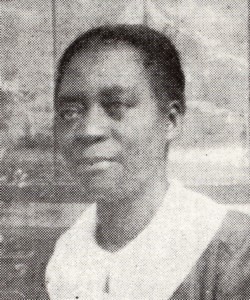Building for the Kingdom: Mother Jessie L. Hayward
“Dear ones, I only feel humble and meek and am glad to know that I have victory, and rejoice because my name is written in heaven. Please pray that I continue in this highway of holiness and that my husband be filled with the Holy Ghost; also that my father will get saved.” — Mother Jessie L. Hayward
Jessie L. Hayward’s testimony was not uncommon to readers of the Church of God Evangel in 1925. Her gratitude for her own salvation and her concern for the spiritual condition of her family were common to countless others. But Mother Hayward, as she became known, was an extraordinary woman whose efforts led the way in building an orphanage and school for the black constituency of the Church of God.
 Regrettably, Mother Hayward lived at a time when racial segregation pervaded the church as well as society, and black members of the Church of God met in a separate General Assembly each year. Recognizing their need to care for orphans and children, the Black Assembly purchased property in Eustis, Florida, in 1926 and set out to build a school and orphanage. At their 1927 Assembly, delegates determined that this would most likely come to pass if they assigned the mission to the women of the church.
Regrettably, Mother Hayward lived at a time when racial segregation pervaded the church as well as society, and black members of the Church of God met in a separate General Assembly each year. Recognizing their need to care for orphans and children, the Black Assembly purchased property in Eustis, Florida, in 1926 and set out to build a school and orphanage. At their 1927 Assembly, delegates determined that this would most likely come to pass if they assigned the mission to the women of the church.
Sister Hayward was selected in 1929 as the second general president of the School and Orphanage Work. As general president, her duties were to raise funds and chair the Women’s Day at each Assembly. With efforts that a reporter later described as “strenuous and tireless,” Mother Hayward set out build the orphanage in the face of tremendous obstacles, including the Great Depression.
Under Hayward’s leadership, the women, often referred to as “saints,” were organized and encouraged to work together for the financial and spiritual life of the church. She immediately called for a special dress for women to wear, which testified of their holiness commitment and encouraged a sense of common identity and purpose. According to the Minutes, “The saint sisters should prepare themselves a uniform white dress to wear on Women’s Day, also to wear on Sunday at the convention. The material should be white poplin, white linen or white broadcloth. They should wear as plain a hat as they can get. The dress should be made plain, long sleeves, high collars and the proper length. The saints should also dress their girls as becometh saint girls, for an example for our future Church of God.”
Then in 1931, the Black Assembly developed a “Book of Instructions for the Church of God Orphanage and School Work.” The “Book of Instructions” included the preferred dress for women on Women’s Day, registration requirements in order to cover expenses, the creation of a “Dorcus Sewing Circle” in every local church, and the raising of offerings based on a penny for each year of age. It also recommended the organization of local women’s bands to support the orphanage and presented a suggested order of service for women’s meetings.
Victory came with the dedication of the first orphanage building as a girl’s dormitory on January 6, 1935. With its completion, the extraordinary Mother Hayward became the first Matron and served in that office until 1938.
—————————————————–
This article was written by Church of God Historian David G. Roebuck, Ph.D., who is director of the Dixon Pentecostal Research Center and assistant professor of the history of Christianity at Lee University. This “Church of God Chronicles” was first published in the February 2005 Church of God Evangel.




